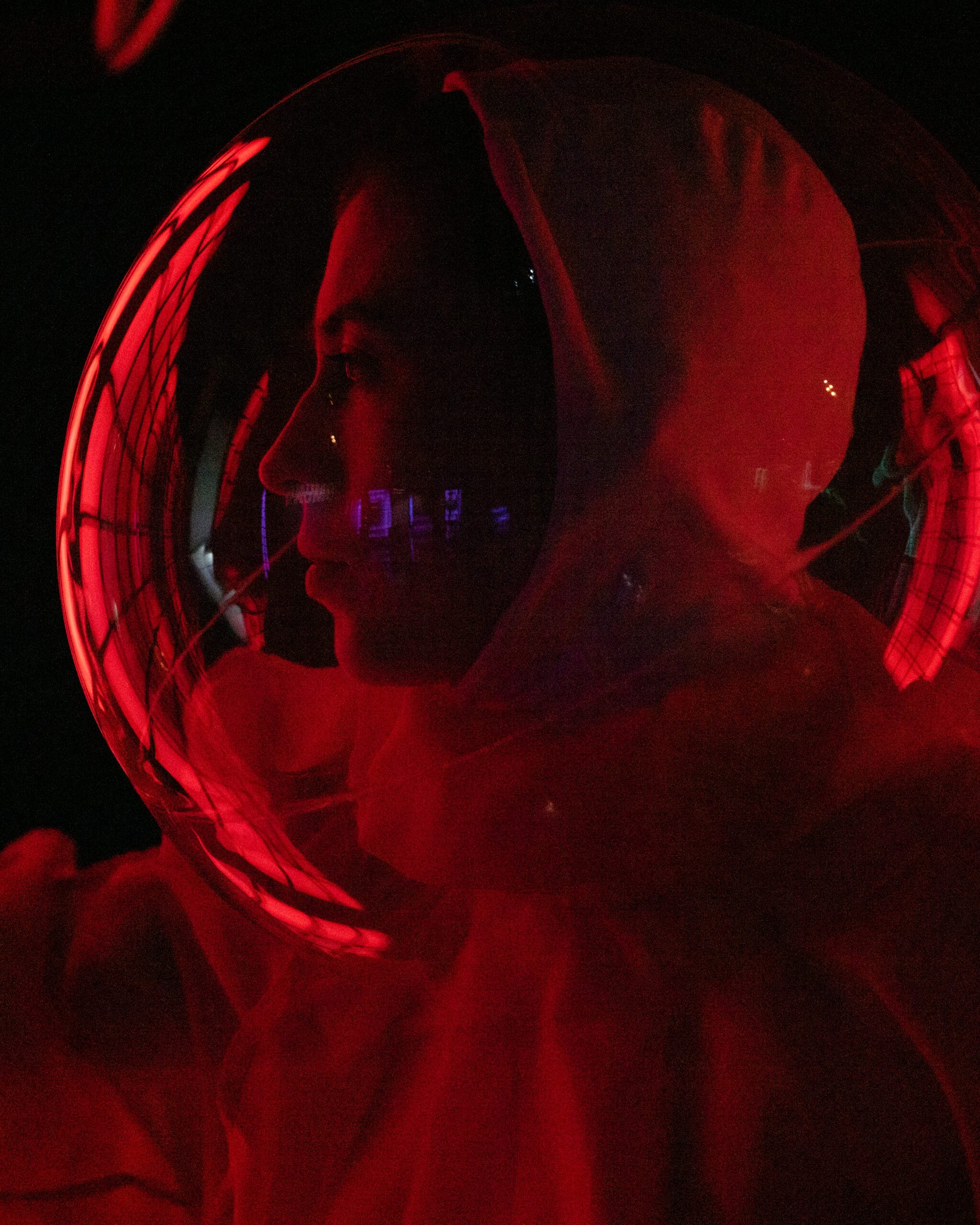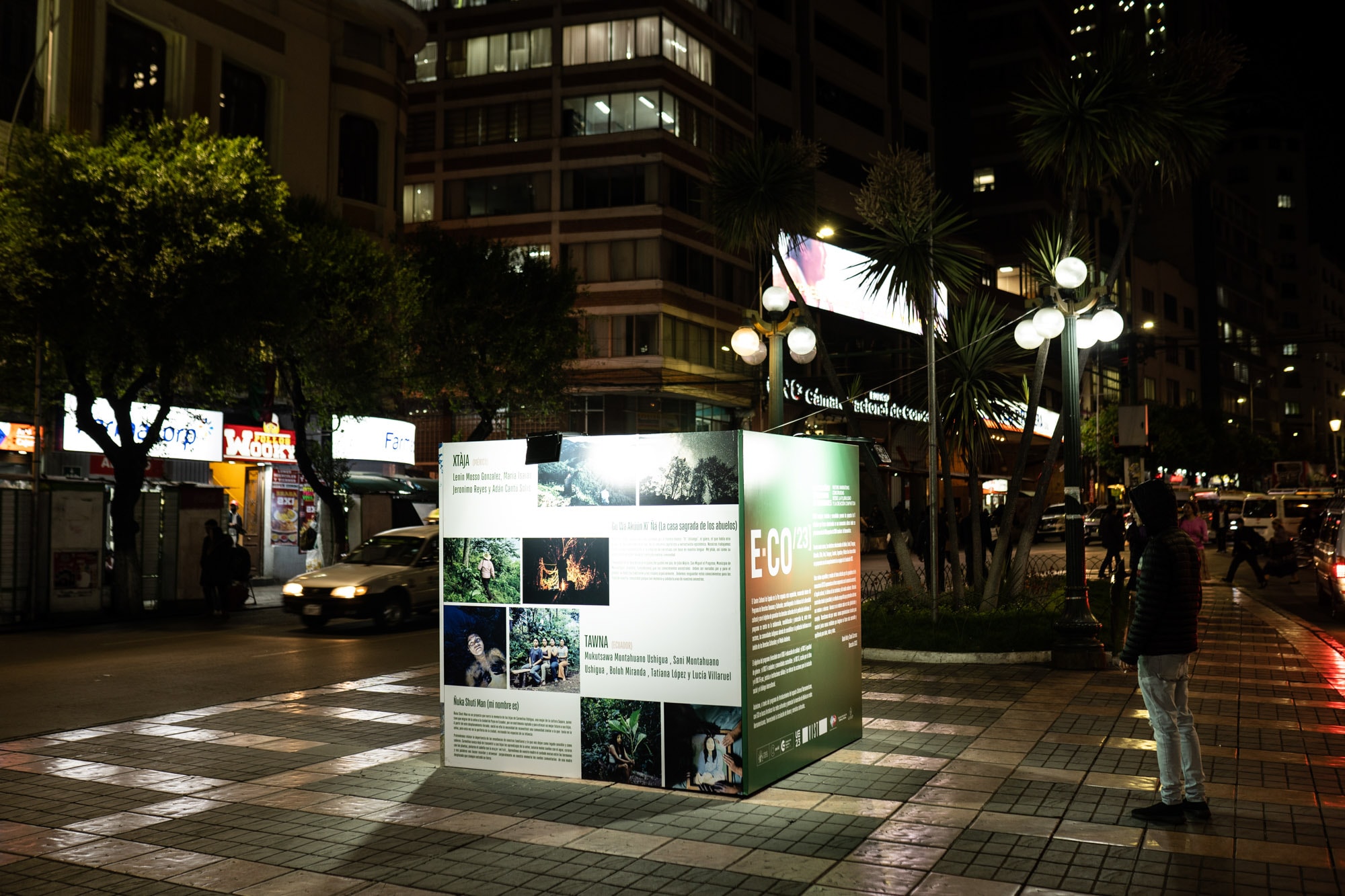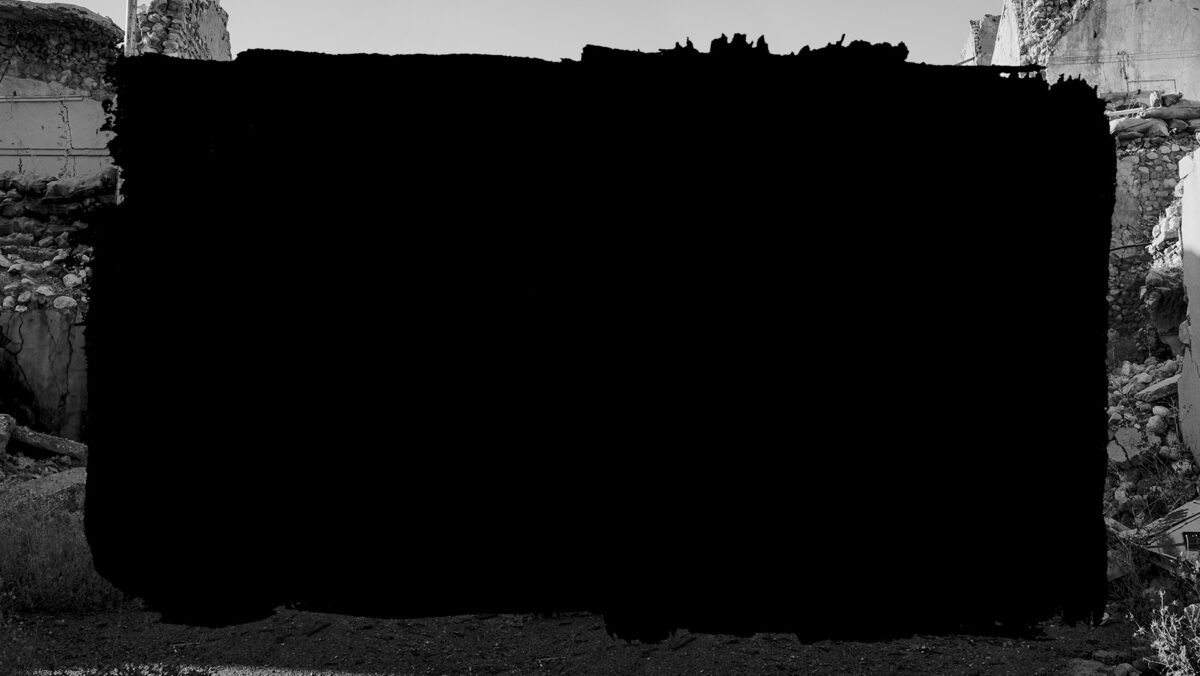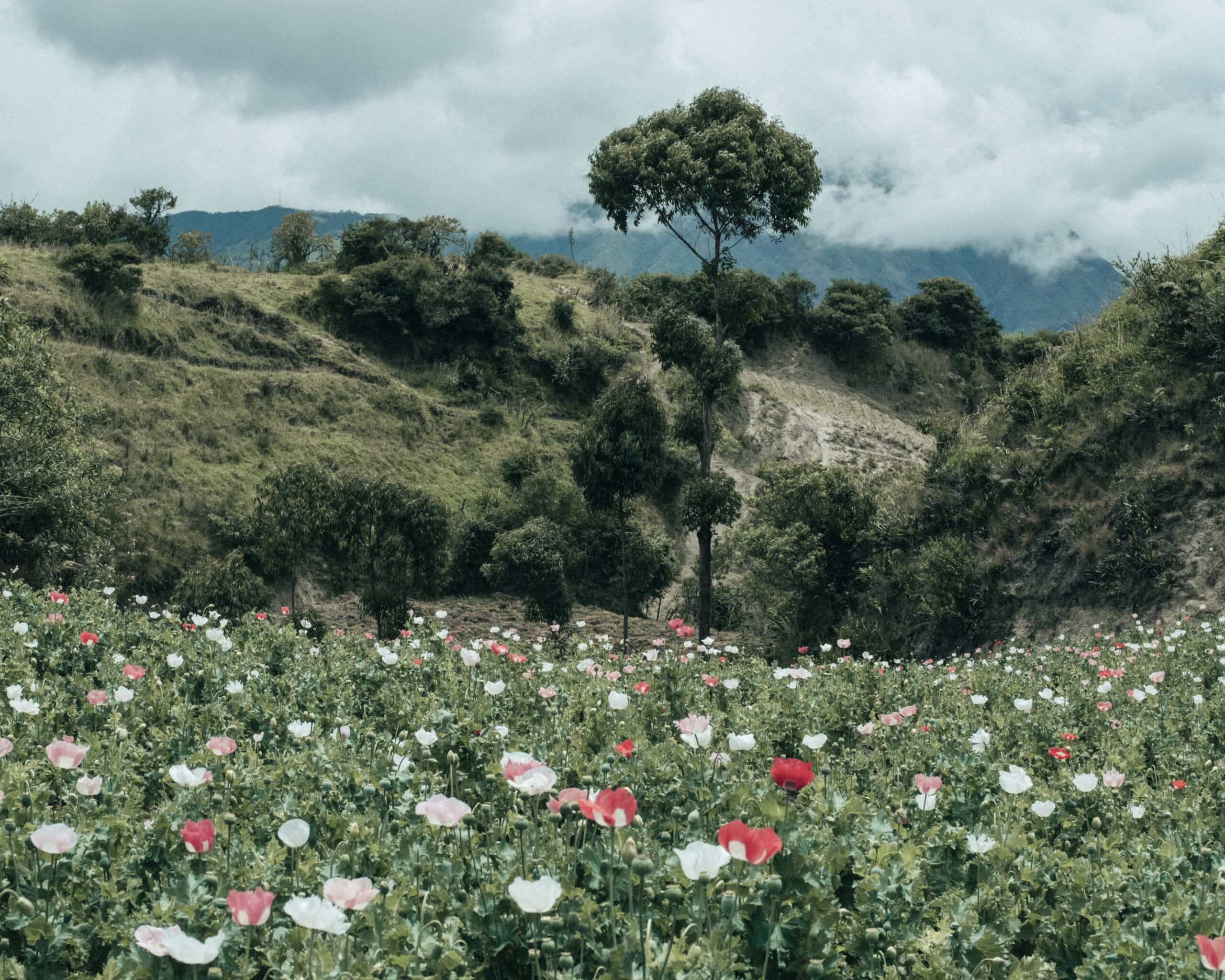
We and the black void of space
During the pandemic, Colombian photographer Juliana Gómez Quijano began investigating women’s participation in space travel. She discovered that in the entire history of space exploration, not only have there been few female astronauts: none have set foot on the moon. With that in mind, Gómez created Elena I, the first expedition to the moon crewed exclusively by women.
By Marcela Vallejo
So far, 549 people have traveled to space, and only 11% have been women. None of them have set foot on the moon. Colombian photographer Juliana Gómez Quijano was struck by this fact. During the pandemic, she investigated the relationship between photography and science. Among the texts she reviewed was the book Seeing Science, published by the Aperture Foundation, in which there was a chapter on trips to the moon, with photos of Buzz Aldrin, one of the crew members of Apollo 11. One of those photographs is the iconic image of Neil Armstrong walking for the first time on the lunar surface.
Soon after, Gomez learned that the entire NASA archive, with the photos from the Aperture book and others, was available for the public domain on Flickr. She downloaded the nearly 15,000 images and wondered what she could do with it all. That’s how she envisioned her next project: Elena I, the first all-female manned expedition to the moon.
To better understand all that a stellar journey entails and to build a story, Juliana began an investigation that involved immersing herself in NASA’s archives, the memories of astronauts and scientists. She was interested in “the astronauts’ experiences, what the takeoff was like, how those significant trip moments make them feel vulnerable. I was not interested in this image we have been sold of heroic astronauts. Going into space is a thing that engages us in many ways psychologically, mental health, the body.”
Then, the photographer made a call: she called cis and trans women who, during their childhood or adolescence, had dreamed of being astronauts. Thirty women arrived, and the photographer interviewed them all. She was interested in their dreams, ways of understanding the moon, and beliefs. From there, she began to construct images.
At the same time, Gómez began working with fashion designer Camilo Álvarez to create unique costumes. They reviewed the archive she had been building to record the changes in NASA costumes and drew inspiration from science fiction films. Alvarez made a suit that reinterprets those references: it has veils to play with the wind and the idea of space and has nods to the style of the 1970s, the peak of the space race.
This work allowed her to win a grant from Parque Explora and the Planetarium of Medellin. In December, Elena I was exhibited as part of the “El Espacio Que Somos” (The space we are) exhibition, together with three other artists who won the grant.
The parts of the ship
So far, this project consists of four elements: first, an appropriation of the NASA archive. Juno carefully reviewed the photos it downloaded and chose those with “errors” that give the entrance to specific colors and glazes, but also those in which the astronauts look vulnerable or share everyday life.
The second is the creation of a new archive: that of the Elena I expedition. These are the images created by Juno with the six chosen astronauts. One of them is Lina María Parra Ochoa, who was in charge of writing the onboard diary, the third element. She took the notes and interviews that Juno had made and wrote a text in which she narrated and described the days of the trip. Isabel Gómez Machado illustrated this diary.
The intention is to play on the tenuous line between reality and fiction. The exhibition also includes the two issues of Life magazine, published ten years before the Apollo 11 mission, sections of the documentary Mercury 13, where President Kennedy’s (rewritten) response to a letter written by a girl who wanted to be an astronaut.
Elena I is set temporally after the first moon landing. One of the essential acts of one of the astronauts in the story is to question the colonizing gesture of her previous colleagues by placing a U.S. flag on the surface. In her labors, she tells in the logbook that she made a decision: to tear the flag down. She is surprised at the ease with which he achieves this and concludes, “it is better this way that the Moon belongs to no one.”
The fourth and last element of the whole project is a soundtrack created by Federico Goes, a musician from Medellín. The music references the most critical moments of a space trip. The work is called: Mujeres en el Espacio.
Gómez wanted to imagine the possibility of women walking on the moon. An idea that NASA has announced will happen in 2024, 55 years after the first moonwalk. Women’s participation in space exploration has been reduced and, above all, invisibilized. For a long time, NASA denied the possibility of the existence of women astronauts. In 1983, when the first female astronaut participated in a space trip, Soviet cosmonauts had already done so 14 years earlier.
Now there are women astronauts, and with the struggle of many of them over the last six decades, expeditions have been achieved that seek parity in the crew and reduce inequalities and gender gaps. However, the disparities do not end because the female astronauts continue to be fewer, even though some are more prepared “they have almost twice as many doctorates as men, 50% versus 28%.”
The Elena I crew comprised Lina Maria Parra, Lina Rojas, Milena Contreras, Aleska Montoya, Manuela Giraldo, and Nebula. Palomita, the little dog, accompanied some of the training sessions, and Natalia Villa was in charge of the project and exhibition production. Carolina Chacón was the curator and accompanied Juno’s creative process with essential questions about gender and sexuality.
As announced in the logbook after takeoff, this women’s team reminds us that “from now on, the future is the starry darkness of the space that awaits us.”


